Ever wondered if you could consolidate all the important business information, your work experiences, meeting notes, and much more on a single online platform?
Life would be sorted, right?
No heavy files to take along every time you go for a business meeting and minimum risk of information loss.
This is possible if you have your own personal knowledge base that you can access from any part of the world.
A personal knowledge base is like an information storehouse comprising meaningful insights on business matters, your personal observations and experiences, ongoing trends, and more.
This blog explains everything about a personal knowledge base – what it is, what are its benefits, and how you can create one.
What is Personal Knowledge Base
A personal knowledge base is similar to your personal diary but there is a significant difference between the two. Your personal knowledge base is built on the cloud and comes with advanced capabilities that a normal paper-based diary doesn’t offer.
You can call it the online business diary that allows you to write and edit content, track the previous changes, and even restore an earlier version of a page.
It’s where you store details about your communication with business leaders, experiences on various projects, takeaways from the conferences you attend, new business ideas, and many other things.
In a nutshell, all your business ideas, insights, and experiences captured and rolled into one single platform forms a personal or private knowledge base.
Why do You Need a Personal or Private Knowledge Base?
A personal knowledge base brings you more benefits than you can imagine. Let’s take a look at some of the substantial benefits of creating a personal knowledge base.
1. Keeps You Well-Prepared for Meetings
You can use your personal knowledge base every time you go to business meetings. Respond to clients quickly and give valuable insights during meetings simply by referring to your personal knowledge base on your mobile phones or laptops. It’s that simple.
2. Helps You Manage Employee Data
You can store details about your teams in your personal knowledge repository. This makes tracking every department’s performance and identifying the top performers of different teams a piece of cake.
So, whenever you are looking for high-performing employees for a special project, refer to your personal knowledge base, and you will have all the details in minutes.
3. Saves Your Valuable Time
A private or internal knowledge base reduces the need to approach your HR staff or department heads for information of any kind. No more regular calls or emails before beginning a new project or going on a business meeting. Store all important information in your personal knowledge store, access it anytime you want, and be fully self-sufficient.
4. Setting Project Deadlines and the Budget Gets Easy
Suppose you are about to start a new project but are unsure of the budget and timelines. In such cases, you can check out your personal knowledge base to get a peek into your previous projects. This will give you a rough idea of your current project expenses, deadlines, and the budget you should allocate. You can also learn from the mistakes committed during past projects, and ensure that they don’t happen again.
Let’s now look at the steps involved in building a personal knowledge base.
How to Create a Personal Knowledge Base?
The process of creating a personal knowledge base starts with selecting a robust knowledge base tool. From there onwards, the journey is quite smooth.
Let’s take a look at the steps involved in building an impressive personal knowledge base.
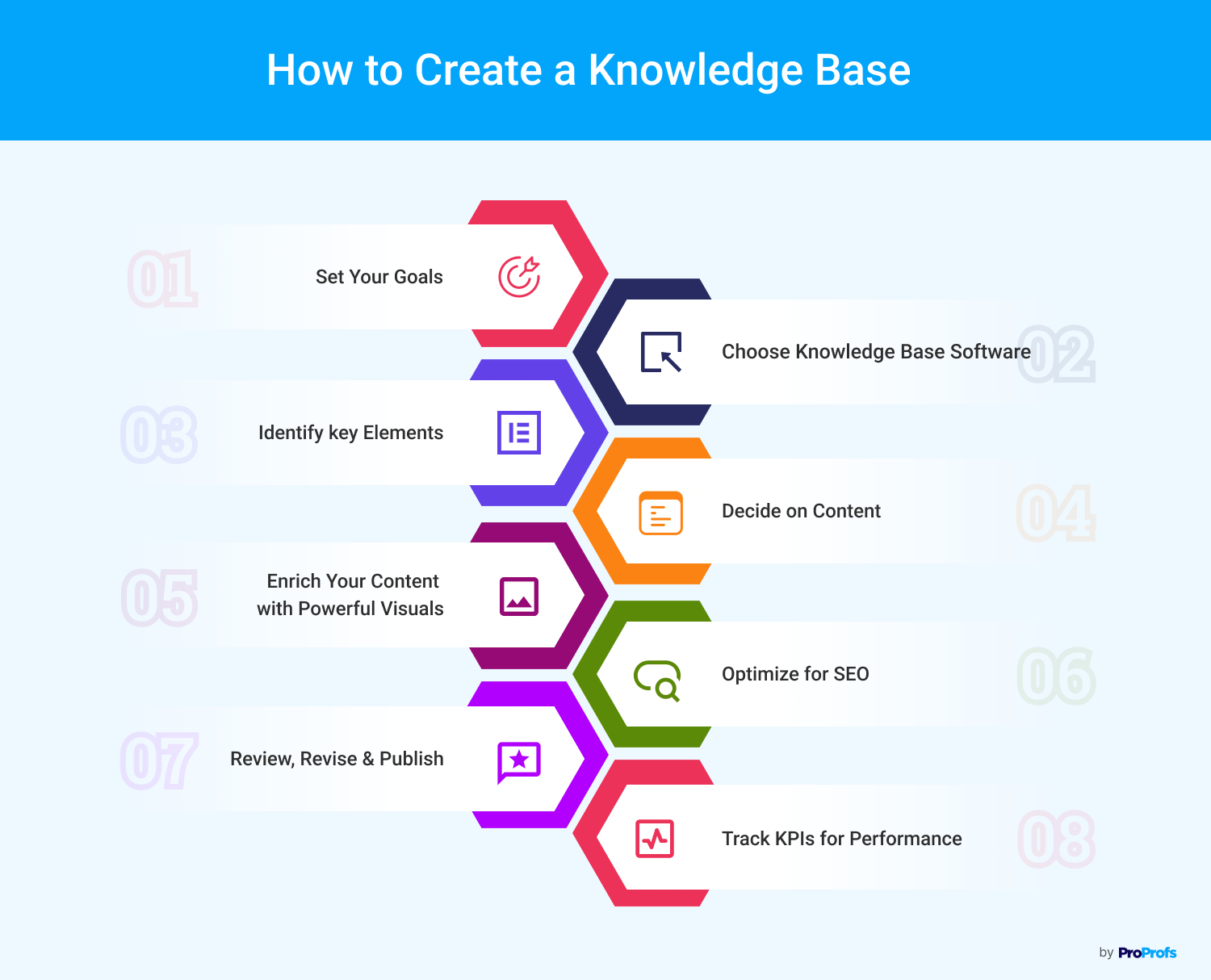
#1 Select a Suitable Knowledge Base Tool
Having the right knowledge base software will give you a strong foundation to carry out the rest of the process smoothly. But, you need to be careful while selecting the tool. The tool should be easy to use and comprise powerful features that assist in content authoring, editing, designing, and publishing.
Besides, it should offer advanced features such as an enterprise-grade security system, team collaboration options, and a robust search mechanism.
This video explains how you can choose a knowledge base tool that’s just right for you.
Once you have the software, the next step is to choose the right template.
#2 Choose a Right Template
Ready-made knowledge base templates save you a lot of time while creating a personal knowledge base. They already have a defined structure with a table of contents and dummy content. So, you don’t have to take the trouble of creating everything from scratch.
In fact, the knowledge base creation process becomes extremely simple with templates. You simply have to add your brand name, logo, and replace the dummy content with real information.
This is how an ideal knowledge base template looks like.
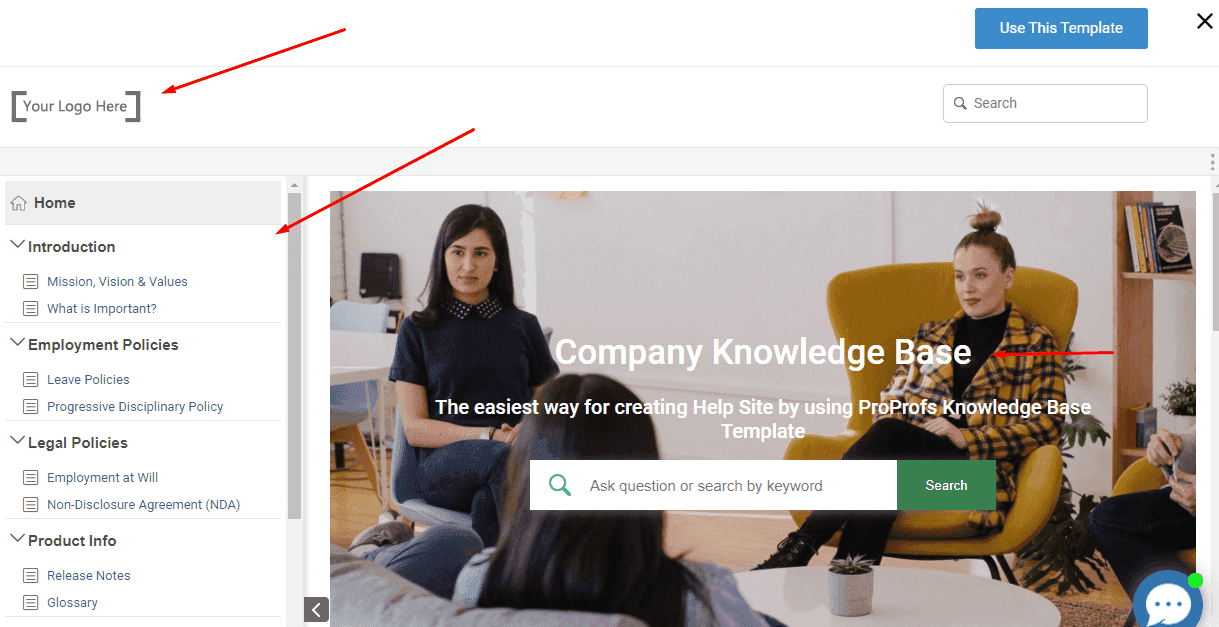
#3 Start Writing
Once you have a template ready, bring it to life by adding valuable information.
Since it’s a private knowledge base, you can add anything you want, such as –
- Details of important projects
- Your personal experiences on a recent business trip
- Key takeaways from the conferences you attend
- Current trends in your industry
- Important notes from clients’ meetings, and much more
You can create relevant categories and decide what to include in which section. For instance, you can have sections such as previous project details, latest conferences attended, revenue details of each quarter, and more.
Read more: Knowledge Base Content Strategy: Tips to Build it
#4 Involve Employees in the Content Creation Process
You also have the option to involve employees in this process. This works great if you don’t have the time to manage your knowledge base.
As a master administrator, you can assign the role of administrator, contributor, editor, and viewer to different employees.
For instance, those at higher management can be appointed as administrators. They will be responsible for overseeing every activity happening in the knowledge base. Department heads or team leads can be assigned the role of editors, and those at the middle or junior level can be assigned the task of writing.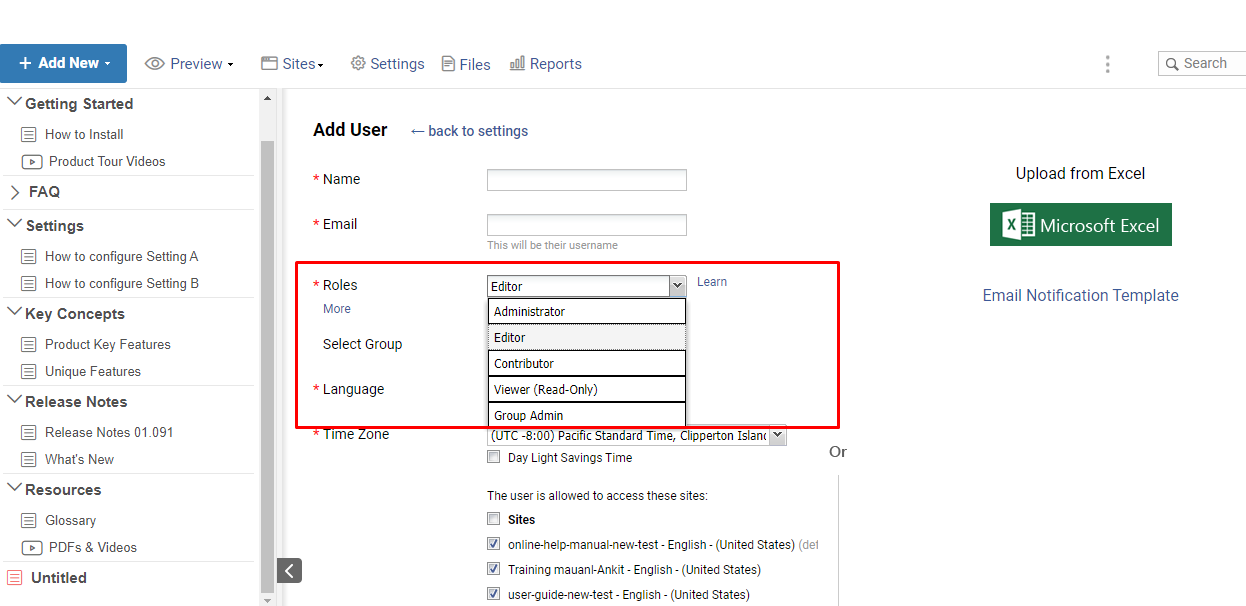
You can pass on rough notes of information you want to add to your personal knowledge base, and your team will do the rest of the work. This will save you a lot of time, and you can rest assured that your personal knowledge base is in good hands.
#5 Maintain Security of Sensitive Content
Your personal knowledge base can have sensitive content that shouldn’t be available to all your employees. To ensure its security, add rules and conditions to specific sections that contain confidential information. These restrictions can be set for pages or entire folders as well.
For instance, if you want some sensitive content to be hidden from the sales team, you can create a specific rule for the same. Look at the image below to understand how it can be done.
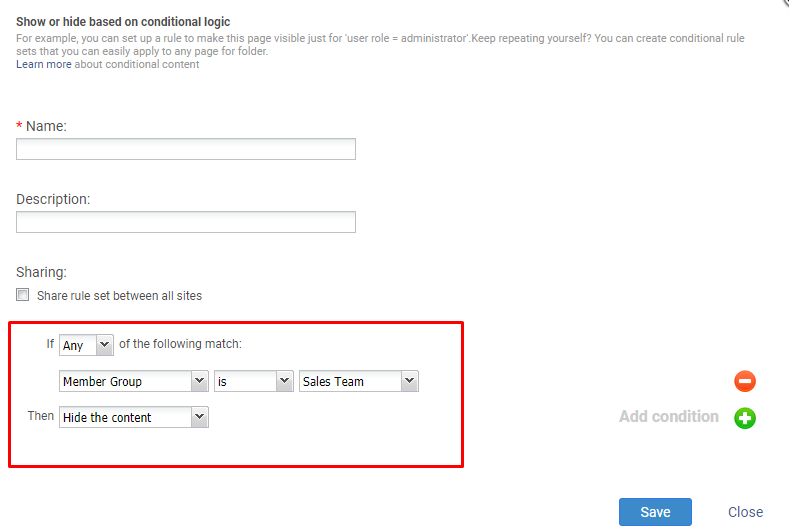
Besides, you can create various other rules based on parameters such as viewing devices, user groups, site language, and more.
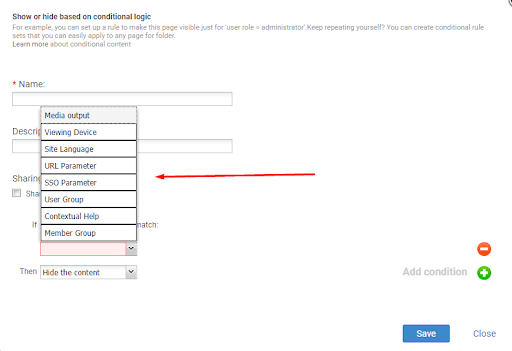
These rule sets will help you control the visibility of your knowledge base content and ensure that sensitive information is available to relevant individuals.
#6 Make Your Knowledge Base Visually-Appealing
Your personal knowledge base will be regularly accessed by you and maybe a few more employees, but that doesn’t mean it shouldn’t look presentable.
Finding information gets a lot easier when the knowledge base is structured, well-designed, and visually-rich.
Here are a few tips you can consider to infuse life into your personal knowledge base:
- Add images and videos to your knowledge base wherever possible. Many times, you will not have the time to go through the content in detail. That’s where visuals help. You can look at an image or watch a video of 2 minutes to get a quick understanding of the text.
- Add your brand name and logo to the personal knowledge base. It will give it a professional look.
- Use appropriate font styles that are easy to understand. Choose a theme that aligns with your brand and is easy on the eyes. Color combinations like grey and orange, blue and white, black and grey, work well generally.
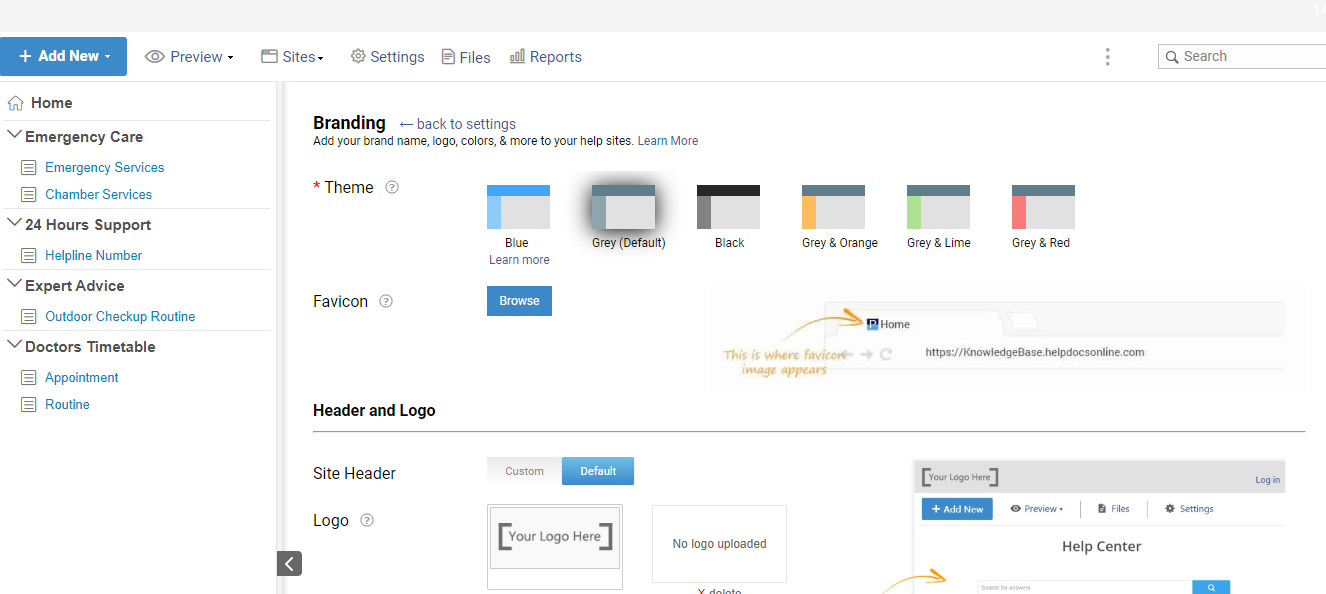
- Have short headers, concise paragraphs, and bullets for each section.
- Provide breathing space in the document. An overloaded knowledge base makes information gathering tedious and time-consuming.
HighQ’s knowledge base is an appropriate example here. It has short paragraphs, consistent branding, and bullets in almost every section.
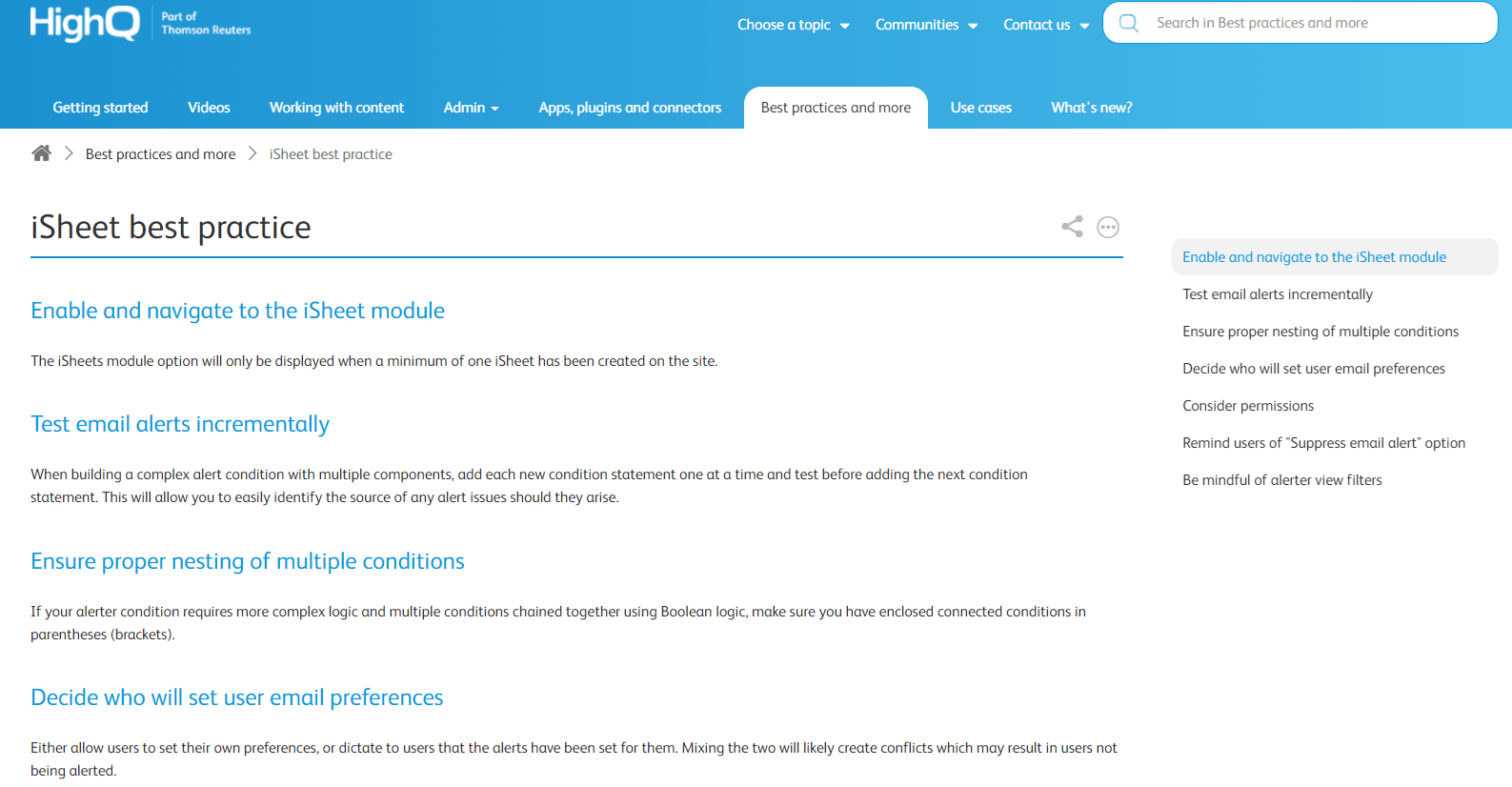
#7 Review & Publish
While creating a personal knowledge base, ensure that all sections are thoroughly reviewed before going live.
For that, you will need to have a streamlined process wherein writers and editors can add status to the articles they are working on. This will maintain transparency in the process, ensuring that articles are checked for errors before getting published.
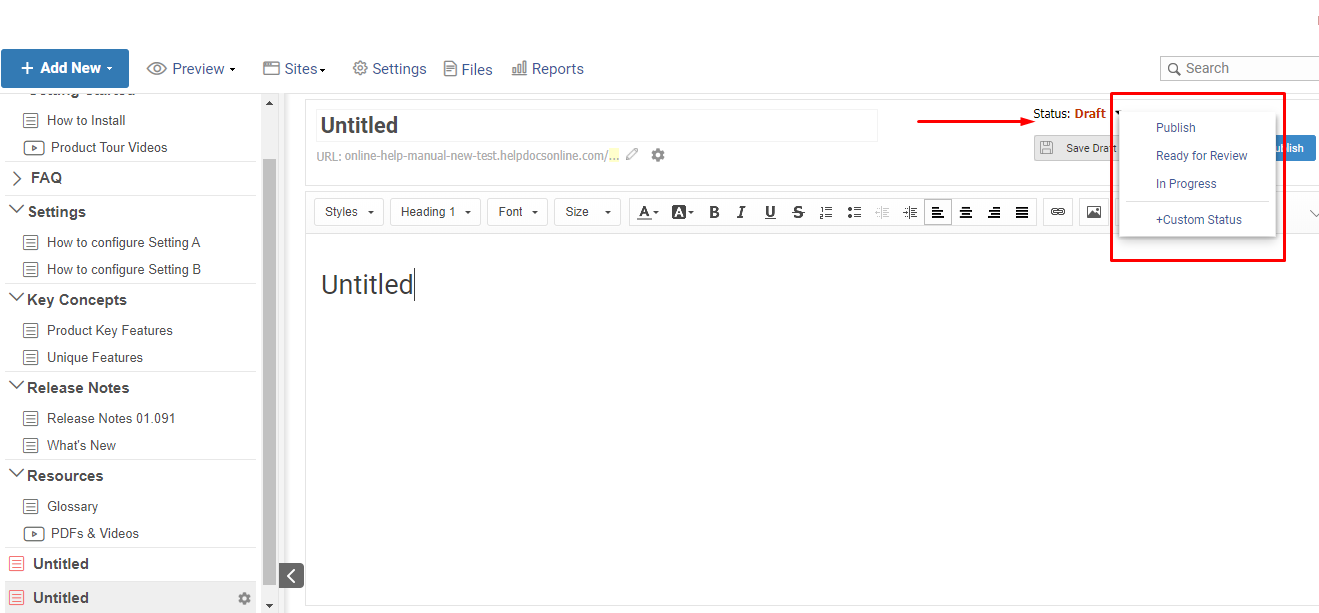
Depending on the stage of an article, its status can be set as – Draft, In Progress, or Ready for Review. Writers and editors can even set a custom status for articles where they need suggestions from a specific employee. Publish when the writing and reviewing part is done, and change the status of articles to – Published.
All Set to Create Your Personal Knowledge Base?
Creating a knowledge base for personal is a piece of cake provided you follow the above-mentioned steps.
First of all, select the right knowledge base software. The entire process depends on how powerful and feature-rich the tool is.
Next, choose a suitable template and start filling it with relevant information. You can even involve different employees to contribute to your knowledge base and manage the entire process. A lackluster knowledge base is a big NO. Focusing on its design and structure is, therefore, extremely important.
When all of it is done, ensure that articles are reviewed properly before getting published.
It’s simple, right?
Consolidate all your business ideas, insights, and critical information in your personal knowledge base and use it anytime you want.
 Tips
Tips
We’d love to hear your tips & suggestions on this article!
FREE. All Features. FOREVER!
Try our Forever FREE account with all premium features!

 We'd love your feedback!
We'd love your feedback! Thanks for your feedback!
Thanks for your feedback!







